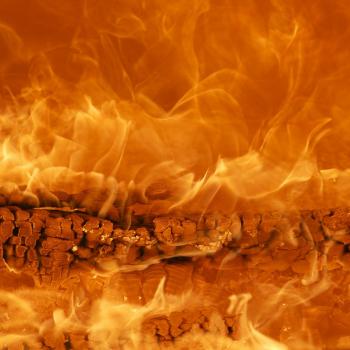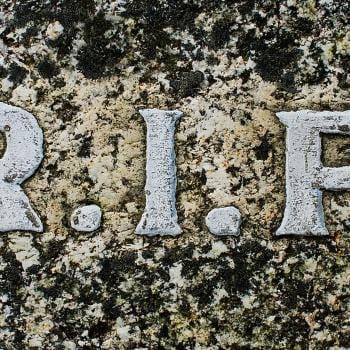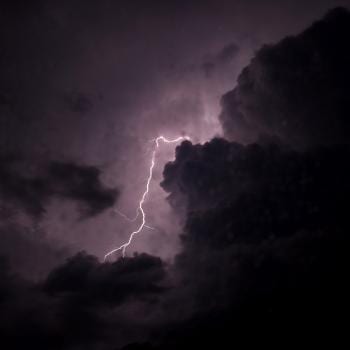Door in the Dragon’s Throat, pp. 36-39
Ya’ll. This book doesn’t get any better.
They’ve pulled their jeeps up to the edge of the cavern. Gozan came too, but Peretti’s portrayal of him is relentless. According to Peretti, Gozan “whimpered” and “protested” and “whined” and “cried” … and that’s all in less than ten lines of text. Gozan fares best when Peretti forgets he’s there for a few paragraphs.
And that rarely happens.
Dr. Cooper paused at the top, and the entire party—except Gozan—instinctively removed their hats.
Dr. Cooper prayed out loud, “Lord God above, we thank You for bringing us to this, a new adventure and opportunity for discovery.”
How the heck was Gozan supposed to know that he was supposed to remove his hat—or even that Dr. Cooper was about to pray? This writing is just weird. And Dr. Cooper is rude. He never tells Gozan anything. Would it have been that hard to turn to him and let him know that his team has a tradition of praying before each mission?
“We pray for success and for the furtherance of Your kingdom through the knowledge we may gain here. We plead now the shed blood of Jesus to cover us and protect us from danger. Amen.”
“Amen!” said Jay and Lila.
“Amen!” said the three crewmen.
“Let me go back!” said Gozan.
I rest my case. This portrayal is disgusting.
Having checked the prayer box, the group starts descending into the cavern, using safety ropes and testing each rock before putting weight on it. From time to time, rocks crumbled under this test and fell into the cavern, followed by a clatter.
“Well,” said Jay, “at least we know this thing has a bottom.”
“I’ll be disappointed if that’s all there is down there,” said Dr. Cooper.
I feel like Dr. Cooper should be taking this a bit more seriously. People have died on previous expeditions. Gozan is terrified for a reason. From where I’m sitting, it looks like Dr. Cooper’s willingness to stereotype Gozan as some sort of scared, sniveling follower-on has made him over-eager to dismiss his fear and cautions.
Case in point: When they reach the bottom, they find a skeleton.
Oh, but first, let me highlight the awful writing:
Gozan shined his light around the cavern, the beam shaking a bit because of his obvious nervousness.
…because of his obvious nervousness?!
This is like reading poorly written fan fic. That last bit was completely unnecessary. Good writers tell you that his beam was shaking a bit ass he shined it around the cavern and leave the reader to conclude the obvious—that he’s nervous. Show, don’t tell.
Anyway! The skeleton!
The cavern suddenly reverberated with the aide’s scream.
Of course Gozan had to be the one to discover it, and of course he has to scream when he sees it.
Six other lights shined immediately in the same direction as Gozan’s and illuminated a rotted skeleton with gaping jaws and unseeing eye sockets, lying prostrate on the floor, the limbs curled up tightly.
“The curse!” cried Gozan. “We’re all going to die, just like him!”
Dr. Cooper grabbed Gozan and tried to contain the man’s violent emotions.
Who’s the one being violent, here?
“Calm down! Do you hear me? Calm down! We’re right here, and we’re still alive, can’t you see that?”
Gozan calmed himself, but his breath was still very unsteady and panting.
“That’s better. Now, can you tell us who that might be?”
Gozan shined his light on the dead figure, taking a painful look for details. “Yes … yes, there on the backpack. That insignia. He was the lost member of the Swiss expedition. Five went down into the Dragon’s Throat … only four came back out. They fled in utter panic, and they had no interest in returning for … this one.”
I have questions. Many questions.
When Al-Dallam was talking to Gozan, at the book’s opening, the Swiss expedition was the last of the expeditions they mentioned. And since any expedition that came after it would have found this body, it makes sense that it was the last one. But … this isn’t a body. It’s a skeleton. And there’s no indication that there was a gap of any length of time between the Swiss expedition and Dr. Cooper’s. The opposite, rather.
So here I am googling “how long does it take for a body to break down to a skeleton.” I’ve probably completely ruined my advertising algorithms, and I may have put myself on a law enforcement watch list.
And for all that, I didn’t really get an answer, because the articles found said it depends on things like climate. This cavern is in a desert, but its floor is described as “sandy” and “slightly damp” and, later, the cavern is described as “cold, musty, and dark.” I’m not sure exactly what that means for our poor skeleton friend. Besides, in fairness, it’s described as a “rotted” skeleton, so perhaps it’s still in the process of breaking down.
There’s another factor to consider. We’re told that there’s a half-mile “dead” circle in the desert around this cavern, in which there is nothing living. Does that include the microorganisms that break down bodies? There certainly wouldn’t have been anything to feed on the body, at the very least, and probably no bugs. But, microorganisms?
I doubt Peretti spent as much time thinking about rates (and means) of decomposition as I have, this morning alone. Whether there would be microorganisms in a place devoid of life probably never occurred to him.
Regardless, I have other questions. Would an expedition really just leave a body like this? Did this person have no family to petition anyone to retrieve the body? This isn’t like bodies on the top of Mount Everest. It’s at the bottom of a cavern in the desert which doesn’t appear to be all that deep. It feels unrealistic that it would have just be left here, to be found (probably) months later by the next expedition.
Anyway, Jay suggests that perhaps he died from a fall. Dr. Cooper disagrees.
“I don’t think he died from a fall. Look at the position of his body—al curled up, the arms protecting the head. Something terrified him.”
And that’s it. That’s the last time we ever hear about the dead man in the cavern. Dr. Cooper and his expedition just … leaves him there … and continues their exploration into the cavern. No more questions. No more interest in what killed him. Which, by the way, seems kind of important. But no—people apparently die of sheer fright all the time!
Onward and upward!
But first, the group notices something odd.
They stood silent, holding their breath. They couldn’t tell if they were hearing or feeling it, it was so very deep, so very quiet, so all-pervading. From somewhere came a very low vibration, a distant, barely discernible rumble. it seemed to be coming from all around them. Some sensed it coming up from the floor.
Dr. Cooper was fascinated. “Air currents maybe. The entire cavern is remarkable resonant.”
This seems important. Especially because Dr. Cooper’s wife died in a tomb cave-in. You would think he’d want to make sure this cavern is stable. You would think a deep, low rumbling would be worth investigating further.
But no. Nothing to see here!
Gozan had his own theory. “Spirits, all around us! The ghosts of hell!”
Dr. Cooper asked his group, “Is anyone paying any attention to him?”
No answer.
“Good. All right, let’s stow these ropes for now. Same order, single-file. Let’s press on.
My god.
It’s not just that this is incredibly rude—and it most certainly is. There’s something else going on here. Gozan is actually right. It isn’t air currents. That rumbling? It’s caused by billions of demons, taking the shape of locusts. It literally is “spirits” and “the ghosts of hell.” Gozan is right. And yet, he is dismissed. And you know what? This is never addressed at the end of the book. No one apologizes to Gozan for not taking him seriously. No one even acknowledges that Gozan was right the whole time. Nope. Nada.
Again and again, we are treated to Dr. Cooper dismissing Gozan’s concerns as “superstition.” Again and again, Dr. Cooper tells Gozan that there must be a scientific reason for various phenomena. But there isn’t. And when our heroes eventually realize that what they’re investigating on this expedition can’t be explained scientifically, that they’re dealing with demons trapped in a vast cavern without walls or bottom, this is treated as logical and correct and not in the least superstitious. The lack of awareness to the double standards at play is boggling.
What’s happening here is actually really fascinating. Peretti is playing into stereotypes and tropes that are both racist and common: he narrates an encounter between rational, scientific white westerners and irrational, superstitious brown people. But Peretti’s rational, scientific white westerners believe in demons, prophesies, and supernatural powers. The orientalist dichotomy Peretti constructs is a farce.
This is a fascinating illustration of the bankruptcy of these stereotypes and of the holes in the dichotomies we construct. When Gozan talks about demons, he’s superstitious. But when Dr. Cooper talks about demons, later, he’s never portrayed as being the least bit superstitious. Why? Because he’s white? Because he’s from the United States, and not the middle east? Is that some sort of teflon?
For the second time this week, I’m going to point you to Body Ritual among the Nacerima. (You can click here to see context and explanation, but if you haven’t before, read the original article first.)
I have a Patreon! Please support my writing!















